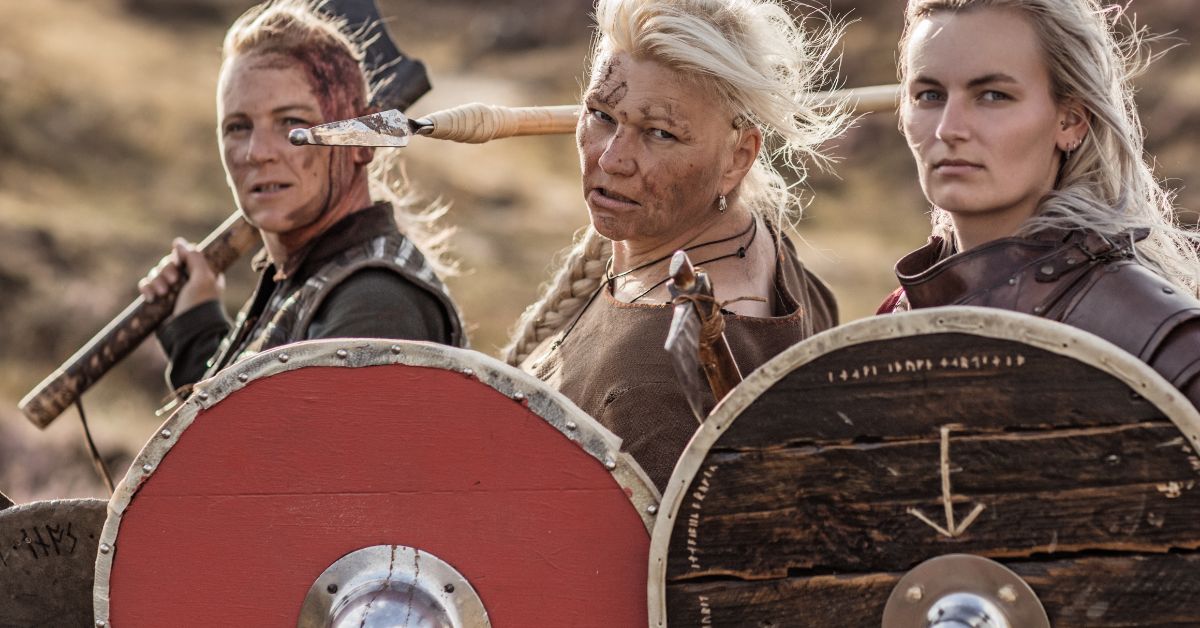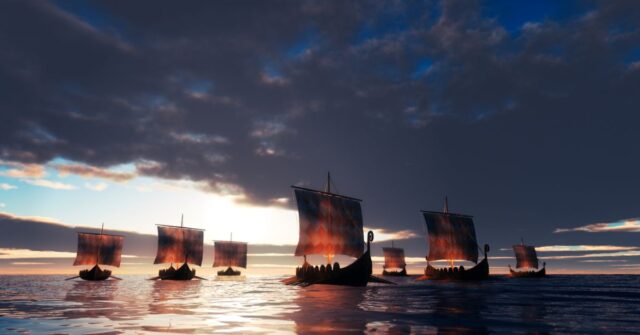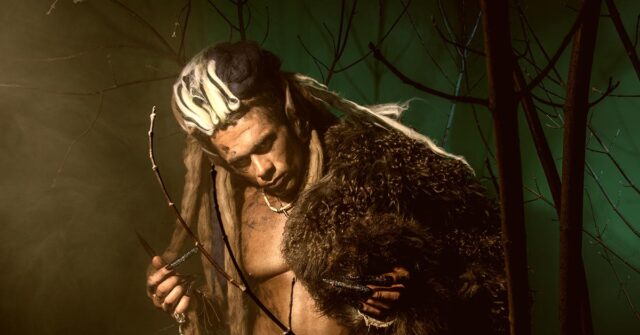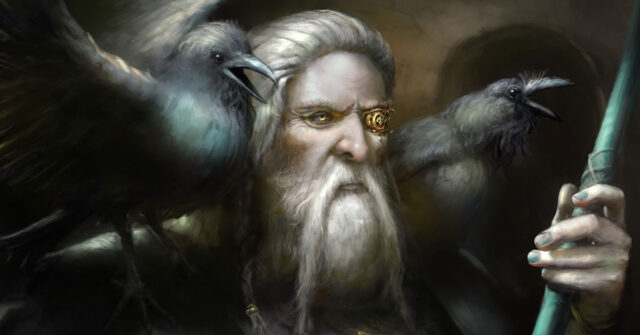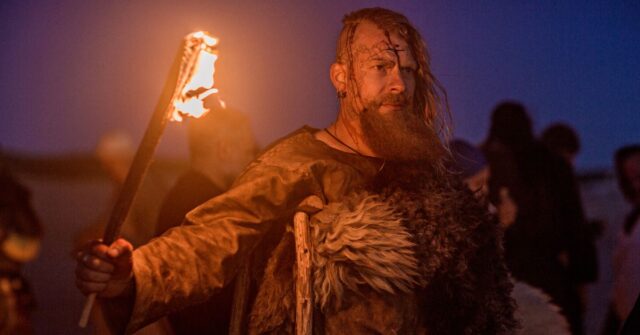The Viking Age, a pivotal moment in Scandinavian history, spanned from the late 8th to the early 11th century.
It was a time characterized by exploration, trade, and warfare, but what of the women who lived during this era?
This post delves into the lives of Viking women, exploring their roles, rights, and the legacies they left behind.
The Historical Context of Viking Women
Before diving into the specific roles of women, it’s essential to understand the broader historical and social context in which they lived.
The Vikings originated from what is now Denmark, Norway, and Sweden and were known for their seafaring expertise, which allowed them to travel far and wide, from the coasts of North America to the Caspian Sea.
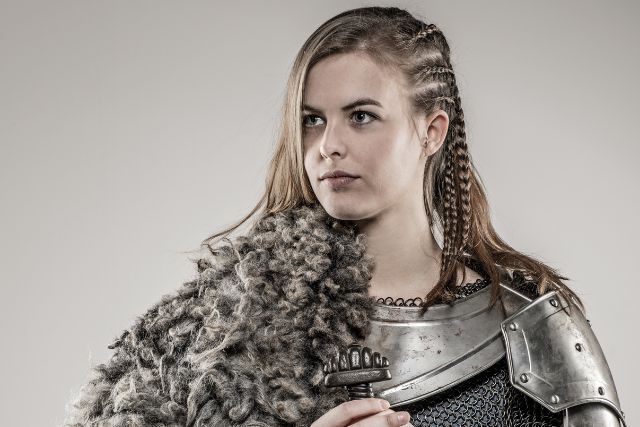

Understanding the Viking Era
The Viking era was a time of significant change, not just in terms of territorial expansion but also in the social dynamics within Norse communities.
It was a time when the old pagan beliefs were still prevalent, but Christianity was also beginning to take root, which would eventually lead to profound cultural transformations.
Social Structure in Viking Communities
Viking society was structured with a clear social hierarchy, from thralls (slaves) at the bottom to the jarls (nobles) at the top.
Women could be found at all levels of this hierarchy and their social status was often, but not always, tied to the men in their lives, whether they were fathers, husbands, or sons.
Roles and Rights of Viking Women
Contrary to the common misconception that Viking women were mere extensions of their husbands, they actually enjoyed a significant degree of autonomy and were integral to the fabric of Norse society.
From managing households to engaging in trade, they were active participants in both domestic and public spheres.
Family and Marriage
Marriage in Viking society was as much a personal relationship as it was a strategic alliance.
Women were often married off to forge bonds between families or clans, but they also had the right to divorce and remarry if they chose to.
Women’s Legal Rights and Property Ownership
Viking women had legal rights that were somewhat progressive for the era. They could own property, inherit from their families, and their dowries remained their own.
In the absence of their husbands, they could also act as the head of the household, managing the family’s affairs.
Economic and Trade Contributions
Women played a vital role in the economy of Viking communities.
They managed farms and estates, crafted goods for trade, and some may have even taken part in expeditions, as suggested by various historical accounts and archaeological findings.
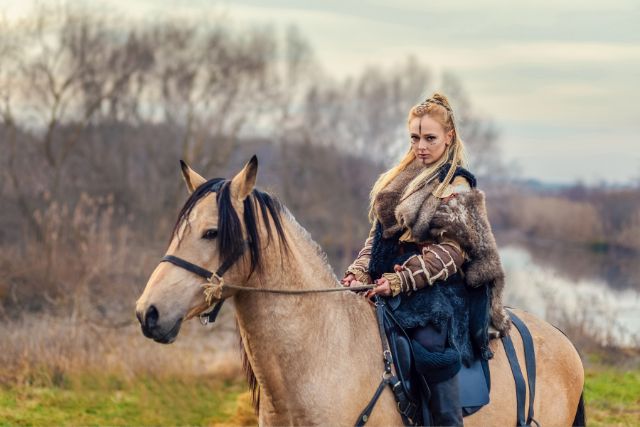

Women in Viking Mythology and Sagas
The Viking sagas and mythology are rich with stories of powerful goddesses and valiant shieldmaidens, reflecting the integral role women played in Norse cosmology and society.
These tales offer insight into the societal ideals and the esteemed attributes of Viking women.
The Influence of Norse Mythology
Norse mythology features a pantheon of strong female figures, from Freyja, the goddess of love and war, to Frigg, the foresighted wife of Odin.
These deities played crucial roles in the mythological narratives and were often invoked for their wisdom and power.
Legendary Viking Women Warriors
The sagas are also filled with tales of women warriors, known as shieldmaidens, who fought alongside men.
While the historical accuracy of these stories is debated, the presence of such characters in Norse literature speaks to the cultural perception of women as capable and strong.
Everyday Life of Viking Women
Aside from the legendary tales, Viking women led complex daily lives that ranged from domestic responsibilities to engaging in artisan crafts that were essential to Viking society’s economy and culture.
Domestic Duties and Child Rearing
In the Viking household, women were typically responsible for domestic duties such as cooking, cleaning, and rearing children.
These tasks were vital for the survival and success of a Viking homestead.
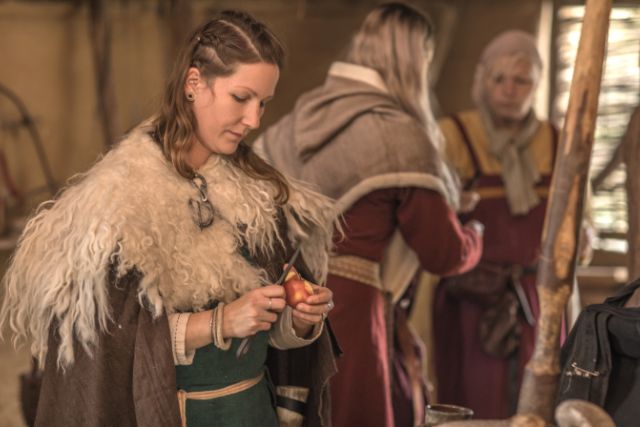

Craftsmanship and Textile Production
Many Viking women were skilled in textile production, an essential craft in Viking society for making sails, clothing, and trade goods.
Archaeological finds have uncovered tools related to weaving, such as loom weights and spindles, in women’s graves, highlighting their role in this craft.
Religious Practices and Rituals
Religion played a significant role in Viking life, and women were often at the forefront of spiritual activities and rituals, which included both Norse pagan practices and, later, Christian traditions.
Female Deities and Veneration
Veneration of female deities was common in Viking religion, with women likely leading rituals and ceremonies to honor goddesses such as Freyja and Skadi.
Rituals and Seiðr: The Viking Magic
Seiðr was a form of magic practiced in the Viking Age, associated with both men and women, though predominantly linked with female practitioners known as vǫlvas.
These women were respected and sometimes feared for their supposed abilities to see into the future and manipulate fate.
Archaeological Evidence of Women’s Lives
Archaeological discoveries have provided valuable evidence of the lives of Viking women, offering tangible connections to their daily experiences and societal roles.
Grave Goods and Burial Sites
The examination of grave goods and burial sites has revealed a wealth of information about the status and roles of women in Viking society.
The presence of jewelry, tools, and domestic items in women’s graves indicates their various roles and the esteem in which they were held.
Artifacts and Daily Tools
Artifacts such as brooches, beads, and textiles have been crucial in understanding the fashion, craftsmanship, and economic activities of Viking women.
These findings help paint a picture of their everyday lives and their influence on Viking culture.
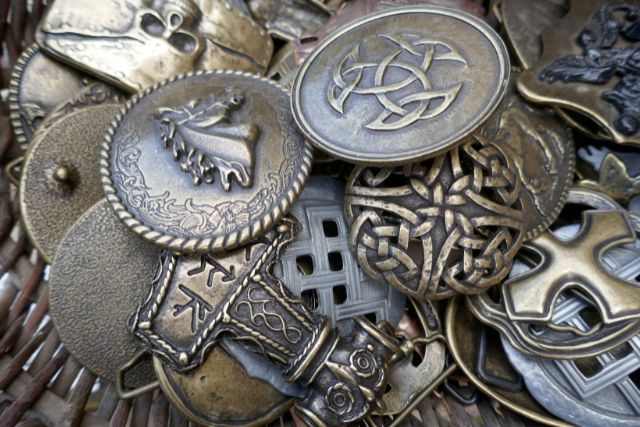

Comparison with Contemporary Societies
When compared with their contemporaries in other parts of the world, Viking women’s lives were unique in several ways, particularly in terms of their legal rights and societal roles.
Viking Women vs. European Counterparts
While women in many parts of medieval Europe had limited rights, Viking women, particularly those of free status, had certain legal rights and societal roles that were more progressive for their time.
Modern Misconceptions and Truths
Today’s popular media often portrays Viking women either as passive figures or as the clichéd shieldmaiden warrior.
However, the truth is more nuanced, and current scholarship provides a more balanced view of their actual roles and rights.
Impact and Legacy
The legacy of Viking women extends far beyond their historical period, influencing contemporary views on gender roles and contributing to our understanding of gender in history.
Influence on Modern Gender Roles
The perception of Viking women as independent and strong has impacted modern ideas about gender roles, challenging traditional narratives about women’s capabilities and rights.
Women in Viking Culture Today
The image of the Viking woman has been adopted by various modern movements as a symbol of empowerment and resilience, demonstrating the enduring legacy of these formidable historical figures.
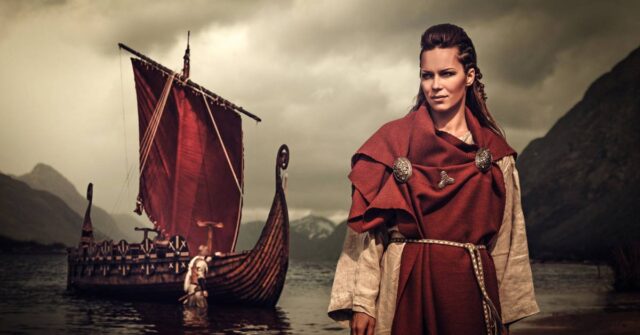

Resources and Further Reading
For those interested in delving deeper into the topic of women in Viking society, a wealth of resources is available, including historical texts, scholarly articles, and engaging novels that bring the Viking world to life.
Academic Works and Papers on Viking Women
Academic journals and historical texts provide in-depth analyses of Viking women’s lives, drawing from archaeological findings and historical records.
Books and Novels for Further Exploration
A range of fiction and non-fiction books explore the narratives of Viking women, offering both scholarly insight and imaginative retellings of their lives.

